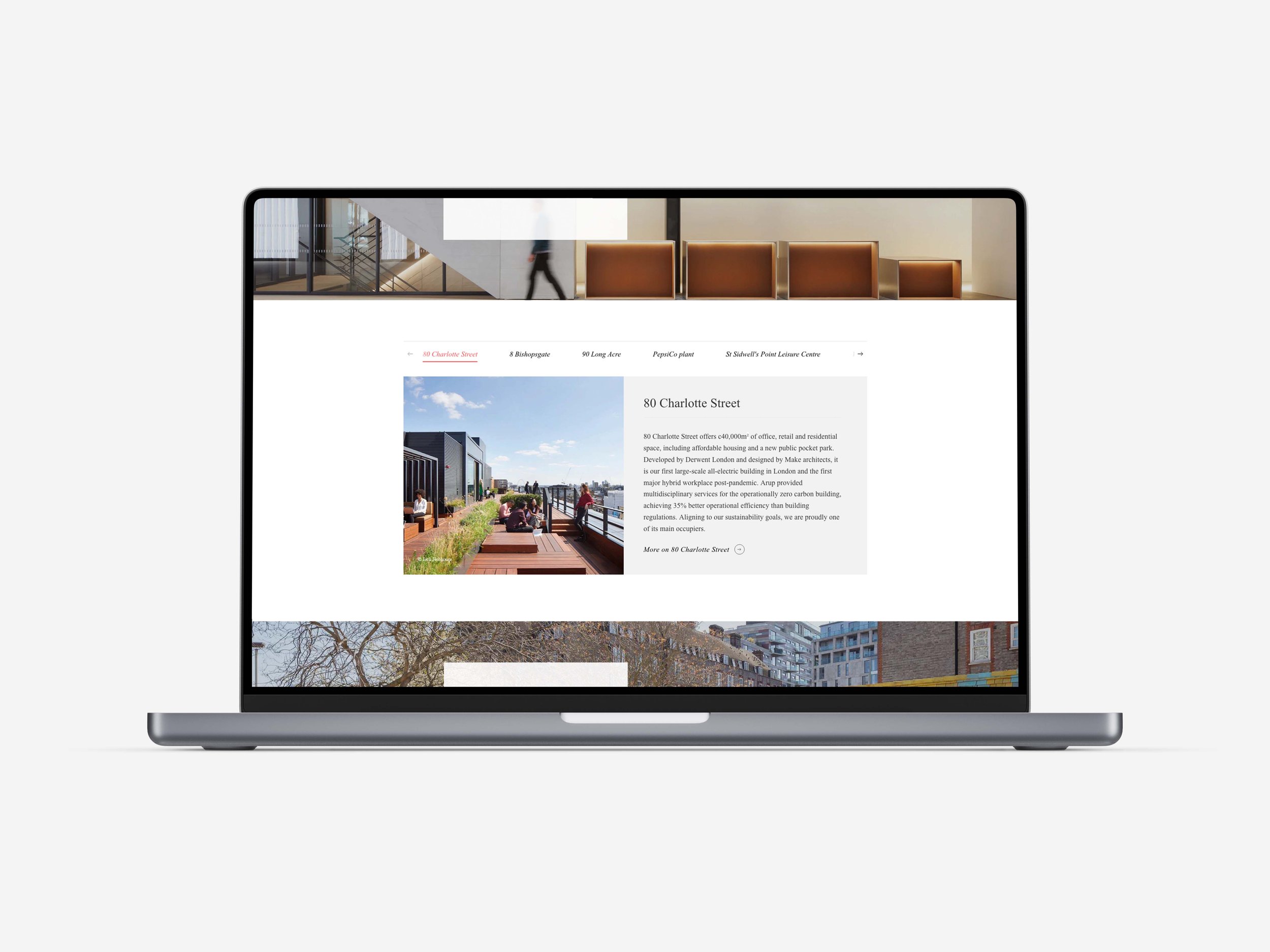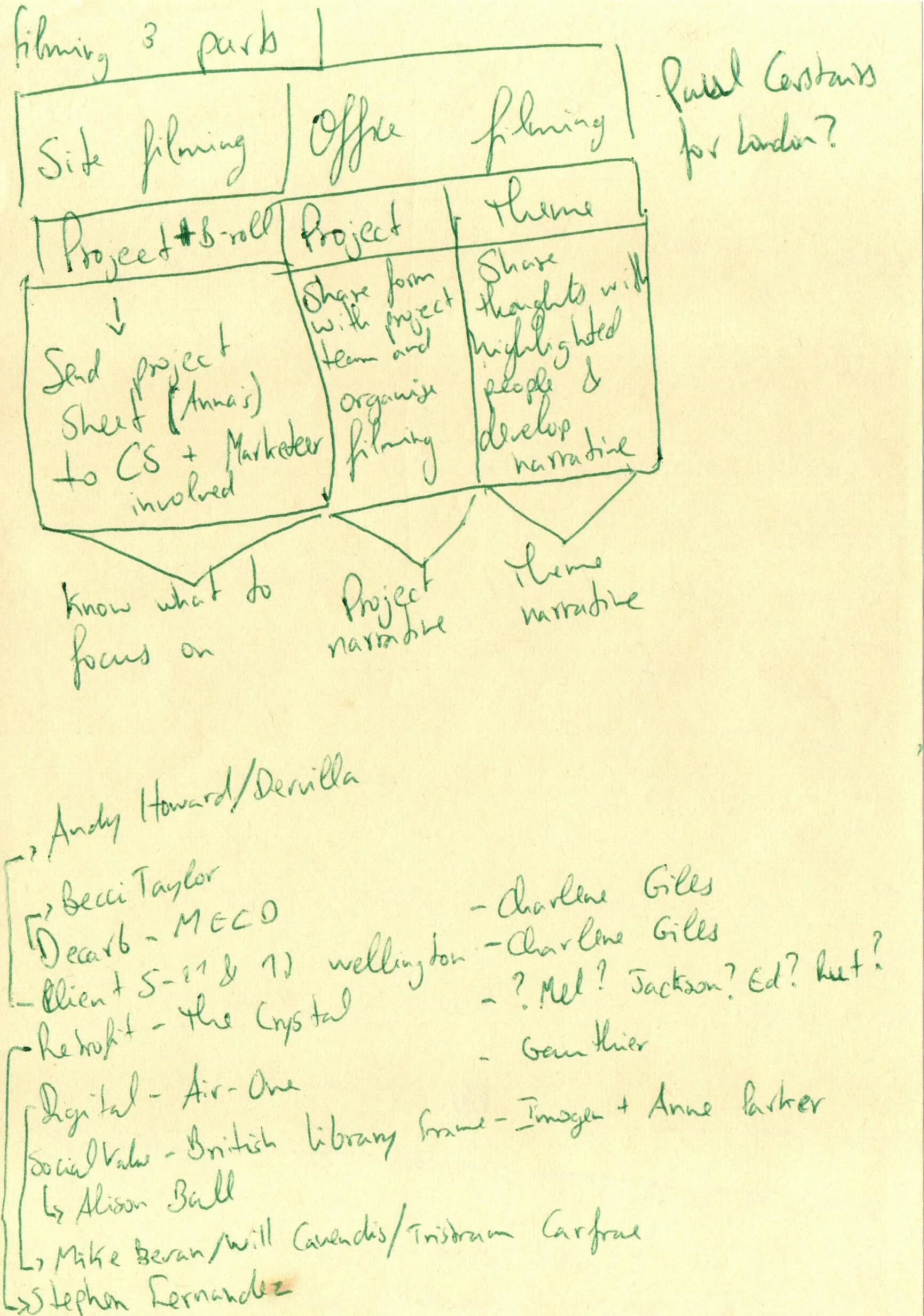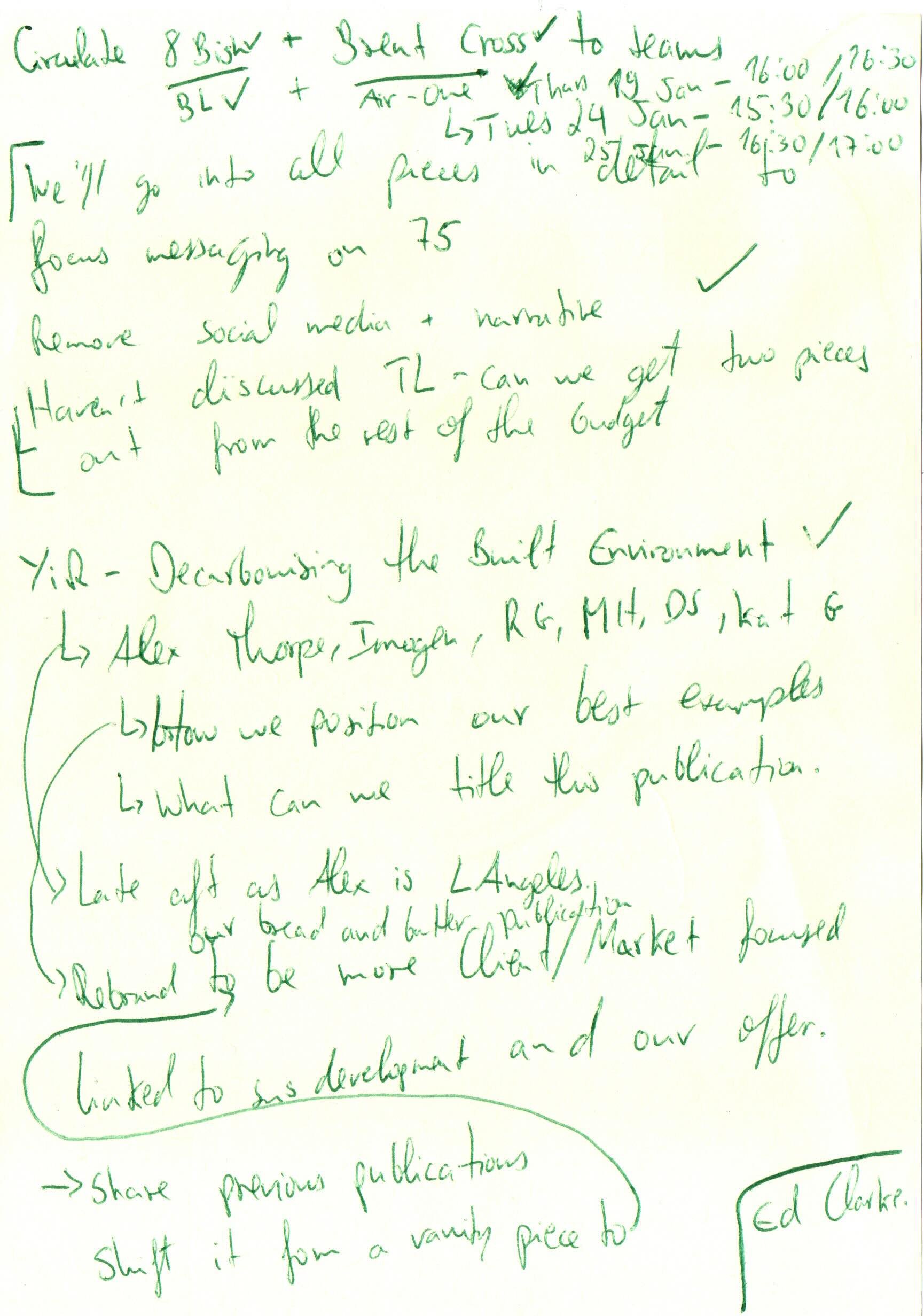
Arup Buildings
Year in Review
Project and stakeholder management
I led the Year in Review publication at Arup, from early strategic planning to gathering content, engaging with stakeholders, creating the visual assets and collaborating with all parties involved. This was the first time the publication was done entirely online, as a way of driving change in the business and showcasing the full benefits of a digital approach within Arup.
The Year in Review features some of Arup's most successful projects of the year. This time with a more focused narrative, it was aimed at Arup's clients and collaborators to showcase its industry-leading technical excellence and collaborative approach.
The project presented many lessons and opportunities for development: aligning a project with the wider firm’s goals, project management, setting and managing expectations from stakeholders, and team support.
I learned to be more trusting and delegate more responsibility to colleagues, playing to everyone's strenghts and making projects more fun.
Contribution from others
Engineering expertise, copywriting, photography, web design, social media, marketing and PR.
Timescale and cost
Approx. 6 months, £40,000
Landing page mock-up (left) and finished landing page (right), created in collaboration with the web team. Arup’s website platform is modular – although the mock-up used only pre-existing modules, some were reserved for specific uses. Through a few design iterations we arrived at a considered solution for the content we wanted to deliver.


Collaborative framework
I developed a collaborative framework to track "input and "inform" checkpoints in the process. Due to the complexity of the project, this is a clear way of showing to all stakeholders where their collaboration is required, and how it fits in with the wider process.
Submission form
I also created a submission form, which aimed to capture information around the topics and key five themes we wanted to emphasise in the publication. This was filled in by the engineering teams to put their projects forward to be included in the publication.
Mastersheet of projects and note-taking
Once information started to come in I used Excel to keep track of each project submission, status, points of contact and various pieces of relevant metadata, such as themes, photo copyright details and project status.
This level of organisation was crucial to keep the project under control, as there were over 60 submissions and 200 stakeholders to manage. I had to consider whether the content supplied was sufficient, or work with the project teams to gather more content on particular topics. I also had to confirm we had the copyright on the visuals provided, or whether we needed to commission photographers to shoot the projects.
I then worked with a copywriter to convert the content provided in the forms into a succinct story for the landing page and for social media, highlighting the most relevant topics for each particular project. I then worked closely with the project manager or director to ensure the text encapsulates the project, and get final approval.
On top of the formal documents that help keep the project on track, I am constantly taking notes, jotting ideas and structuring thoughts and immediate priorities.
This helps me capture ideas, collect thoughts, keep the relevant parts of the project fresh in my memory, and structure my thinking in a constructive way.
Hero projects and interviewing
To create richer content, we created 2-minute videos for the hero project from each of the five themes.
Working in collaboration with the film team and the project teams, we went on-site to shoot the projects and capture relevant project details. Back in the office, we also interviewed the project teams: I wrote the script, led the interviews and helped steer the conversation whilst my colleagues set up the cameras and lighting and captured the content.
The full 2-minute videos featured on the landing page, whilst 20-second teasers featured on social media.
Social media campaign and tracking performance
Using all the assets developed, every project featured as part of a social media campaign, leading viewers to the landing page.
Measuring the performance of the landing page and social media posts allowed us to compare its performance to other campaigns and show the scope of the publication in the digital realm.
The content produced was also shared with marketing and used in other campaigns, and with business development teams as valuable case studies.
We also received feedback on how useful a downloadable PDF would be, so this will be reintroduced for the next issue. There is also a desire to explore more video content, and the film team is keen to collaborate again.
I am all for celebrating work and small successes, making people smile and feel valued. It's important to connect with those we collaborate with and show appreciation for their contribution.



















